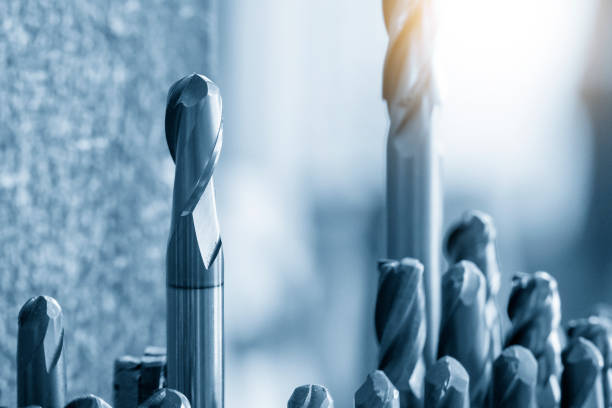Five Factors That Can Increase Carbide Punch Tool's Profitability And The Lifetime

Five things can improve tool life, profitability, and ensure fabricators get the best out of their punch tooling, make sure they don't wear out and punch the right designs.
These five suggestions will help you get the most from your punching equipment.
Proper Positioning
Fabricators frequently commit the biggest errors by not aligning their turret station properly and maintaining it in good condition. This applies not only to their position but also the direction they are directed towards the punch. A saw-tooth effect will occur when a station is not in the correct alignment and is turned half an inch. It can happen by nipping or punching straight lines with the use of a rectangular tool. The saw-tooth effect could cause uneven wear on the tool as time passes, which will eventually lead to a loss of the cutting edge.
Nibbling creates side loading, in which the punch starts to come down but only a fraction of the tool is able to penetrate the material. Most of the tool remains unsupported and results in the tool pulling towards the side that is not supported and cause a break in the precision tools.
Experts suggest using a fully controlled tool and an instrument with a greater clearance for those who plan to nibble. This will ensure that the exact carbide punch point is vertical when it is pierced through the sheet. This is especially useful for small holes in thick material, or when nibbling.
Coatings and treatments
Coatings and treatments are an excellent method to prolong the life of your punch and decrease galling. One of the most effective ways to get the most out of your tool is to coat it with. There are a variety of possibilities for coatings for tools and treatments, including an nitride treatment that fuses nitride into the punch points.
This makes the punch easier to cut through the material, and then pull it away. Coatings such as zirconium, titanium, and nitride are applied in multiple, thin layers on the punch point. This provides lubricity to the point of impact and helps keep it cool during high-impact applications where heat buildup can occur.
Right Pass Away Clearance
The right clearance is critical and has a significant influence on the stress on the tooling in addition, the finish on the hole.
If you aware that there is a burr-like appearance this could be a sign that the die clearance is not correct. Insufficient clearance of the die can result in the material to roll over and stretch, creating an upward edge or burr. If the clearance is too tight, it could result in a lot of stress on the tool, with the punch stripping out of the pierced hole.
A proper die clearance leads to better stripping and less burr. Die clearance is dependent on the material. Fabricators would adjust die clearance for stainless to 25percent of the thickness of the material. With mild steel and other types of aluminum, the die clearance is less than stainless, roughly 20 percent, depending on the type of material being punched out.
4.Sharp Tools
Sharp tools can be the key to the quality of your punching hole. It is easiest to feel the tool to tell if it needs to be sharpened. If your tool is dull, it needs to be sharpened. You can also determine the quality of the hole, if there's rollover on the edge of the punch this could be an indication of a dull tool. The punch may be getting worse when the hole is damaged. For instance, a circular hole that looks like an egg could mean that one side of the punch is being broken down prior to the other side.
You can hear the difference when the punch is hitting the sheet. If it's getting dull. It is suggested that fabricators make their tools sharper more often instead of pounding away until they become extremely dull.
It's best to sharpen the tool more frequently and then take a little material off each time. This will drastically increase tool lifespan. Sharpening tools more frequently can improve tungsten carbide punch the tool's life by side-by-side testing.
For sharpening, having an effective coolant is crucial. You can damage the tool in the event that you do not use coolant when sharpening. Use a high-quality grinding wheel with consistent speed to bring the tool in.
Once you've finished sharpening, it is essential that you demagnetize your tools. They attract carbon-type particles when they are magnetized. Wear increases with any extra debris or dust on the tool. The goal is to remove any extra debris.
After sharpening the tool, you may see a burr at the edge of the point. To remove this, you can use a soft abrasive stone to cut off the material. It will leave a smooth edge with a minimum radius. After sharpening dies, make sure to use die shims. This will ensure that dies are of the right height so that the punch is able to penetrate throughout the board.
Lubrication
Fabricators might not properly lubricate their tools. This could lead to reduced tool life by as much as 60% and cause galling when working with materials that are soft. A properly lubricated tip can prevent the punch from becoming hot.
Beyond these five things, make sure you have a storage solution for your custom punch tools and dies, so that they're not moving around and scratched.